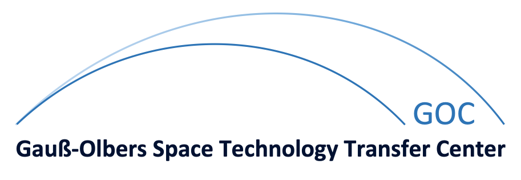Holistic 3D communication networks for 6G (6G-TakeOff)
|
Subproject: |
 |
Initial Situation
The cellular mobile communications networks currently in use with their earth-bound base stations form a two-dimensional and purely terrestrial infrastructure of radio coverage: The antennas for radio coverage are mounted on more or less high masts and are thus approximately on one level. The availability of necessary connectivity for tomorrow's digital society and economy therefore requires new network architectures in which, from their design approach, flying network nodes together with terrestrial network components form a unified 3D communication network - "unified 3D network". Such a 3D network should be able to shift network functionalities dynamically between the network components according to demand. The holistic approach required for this enables innovations that exploit the potential of flying network components more comprehensively and deeply compared to the approaches envisioned by 3GPP for 5G-NTN. 6G-TakeOff will, through this holistic approach, produce 3D networks for 6G that go beyond 5G-NTN.
Objective
6G-TakeOff aims to provide anytime, anywhere connectivity by developing new network architectures and technologies. To this end, 6G-TakeOff will strive for a uniform 3D communication network in its design approach, in which flying network nodes together with terrestrial network components provide functionalities dynamically according to demand. The holistic approach required for this opens up scope for innovations that go beyond the possibilities of the 3GPP 5G-NTN approach by exploiting the potential of flying network components much more comprehensively and deeply. Classes of network nodes include IoT/end-user devices, terrestrial access nodes, and 3D components such as Low Altitude Platforms (LAPS), High Altitude Platforms (HAPS), and satellites (LEOs, GEOs) with their specific characteristics. A 6G system will connect these network components in a highly flexible, autonomous, where necessary infrastructure-independent way and according to current requirements.
Research Contribution of the University of Bremen
The object of the subproject is to research innovative concepts for 6th generation 3D communication networks. For this purpose, the dynamic mapping of RAN functionality to network components is analyzed, the information flows between the 3D network components are optimized, and distributed receiver concepts are explored. Starting from the theoretical concept development, corresponding methods are explored taking into account 6G-specific system parameters and scenarios as well as the ongoing international discussions in the various committees.
Further Information
Details
| Duration: | 08/2022 - 07/2025 |
| Funding: | Federal Ministry of Education and Research |
| Partners: | Creonic GmbH DSI Aerospace Technologie GmbH Frauenhofer FOKUS Institute for Wireless Communication and Navigation, Technische Universität Kaiserslautern (TUK) |
| Precursor: | Open 6G Hub |
Publications
-
Deep FAVIB: Deep Learning-Based Forward-Aware Quantization via Information Bottleneck Method
BibTEX

M. Hummert, S. Hassanpour, D. Wübben, A. Dekorsy
IEEE International Conference on Communications (ICC), Denver, CO, USA, 9. - 13. June 2024 -
Deep Learning-Based Forward-Aware Quantization for Satellite-Aided Communications via Information Bottleneck Method
BibTEX

M. Hummert, S. Hassanpour, D. Wübben, A. Dekorsy
2024 EuCNC & 6G Summit, Antwerp, Belgium, 3. - 6. June 2024 -
RAN Functional Split Options for Integrated Terrestrial and Non-Terrestrial 6G Networks
BibTEX

M.R. Elmeligy, T. Düe, M. Vakilifard, D. Wübben, A. Dekorsy
11th International Japan-Africa Conference on Electronics, Communications and Computations (JAC-ECC 2023), Cairo, Egypt, 18. - 20. December 2023 -
6G-TakeOff: Holistic 3D Communication Networks for 6G
BibTEX

D. Wübben, A. Dekorsy, H.D. Schotten, A. Frisch, M. Britsch, M. Breitbach, K. Geißinger, T. Heckmann, A. Daurembekova, F. Clazzer, B. Barth, N. Montealegre, M. Andjelkovic, T. Petermann, G. Dietl, K. Schilling
European Conference on Networks and Communications & 6G Summit (EuCNC & 6G Summit 2023), Gothenburg, Sweden, 6. - 8. June 2023 -
A Comparison between RSMA, SDMA, and OMA in Multibeam LEO Satellite Systems
BibTEX

A. Schröder, M. Röper, D. Wübben, B. Matthiesen, P. Popovski, A. Dekorsy
International ITG 26th Workshop on Smart Antennas and 13th Conference on Systems, Communications, and Coding, Braunschweig, Germany, 27. February - 3. March 2023







